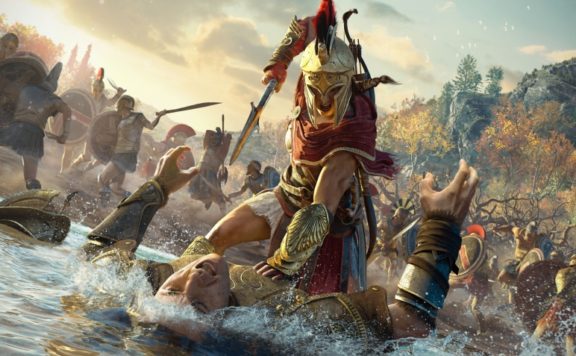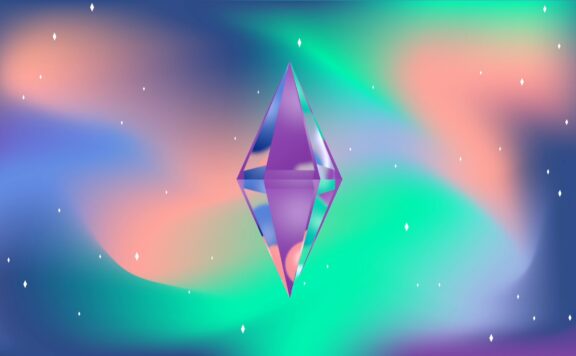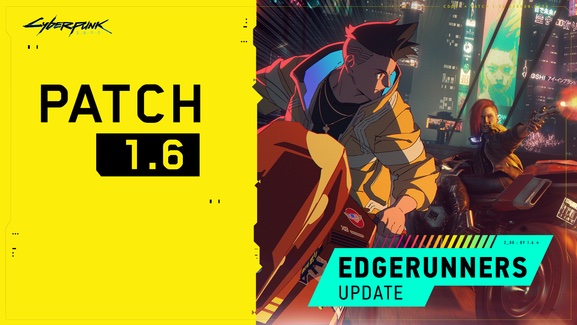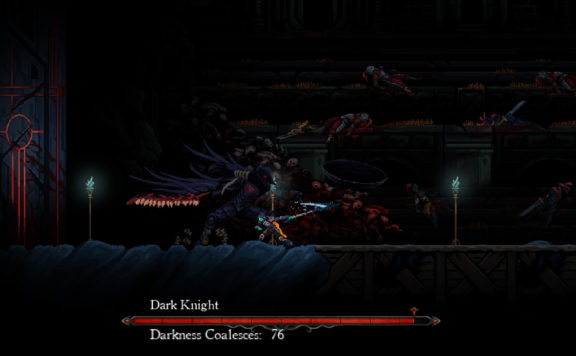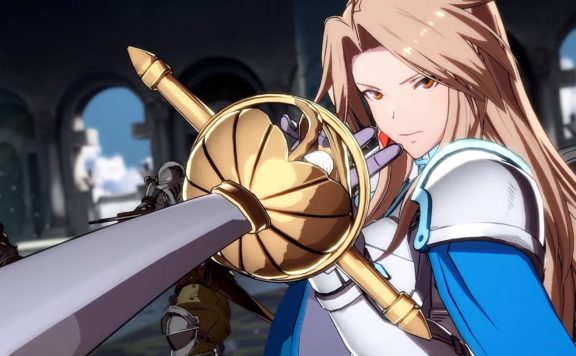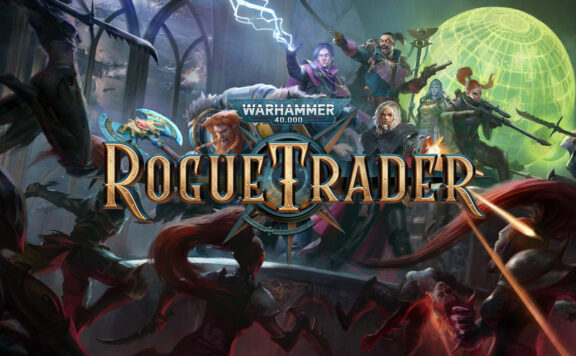God of War is a prolific series of games that explores the life of Kratos, the Spartan God of War. The first game launched in 2005 on PS2 and immediately immersed players into this tale of revenge and brutality. The older games explore Kratos’ vengeance against the Greek Gods of Olympus, while the installment from 2018 moves the events of the game to the North and its Pantheon and focuses in equal measure on Kratos, his son Atreus and the relationship between the two.
And so, let’s begin or, rather, end the story of the God of War. As the prophecies promised, Ragnarök has finally happened and I can tell you all about it with a heavy heart if you haven’t got a chance to play the game yet.
To be honest, it took me a very, very long time to beat the game, having to take large breaks in my playthrough to relax and digest everything that happens in the plot. And so, let’s dive in and look through it together – this is our God of War: Ragnarök PS4 review.
First, let’s briefly recall how we ended up having to fight the Ragnarök altogether. In the previous installment of the game, Kratos and Atreus (also known as “BOY”) had to bury the loving wife and mother, Jötunn Faye. The duo also had to kill two sons of Thor as well as Baldur, son of Odin and Freya, which caused a chain of events that led to the Ragnarök, the final battle and the end of Gods.
To be more precise, in our case it is mostly the search for forgotten chests, endless runes, killing of witches and a variety of monsters mixed with tasks and chores until the time comes to blow the Gjallarhorn and enter the last battle.
The first Northern chapter of Kratos’ life left me a bit unimpressed by the narrative itself. No, I’m not saying that the game is bad, far from it: from the combat system to the visuals and musical accompaniment, it is a great product. But the story itself… For me, God of War is a brutal game in which we explore the story of a deceived warrior from Sparta. And here we see a tired man that decided to become an exemplary father. We learn together with him what it takes to understand a different generation and to be a parent through the prism of his experience.
It is not a bad approach to the story, but it is certainly not something I have expected from a game called God of War. Were it called something else, related to Atreus, and released in a God of War Story cycle, the expectations would have been totally different.
The second game confused me even more. If you were looking for a heavy story about the end of the world, this might not be it. Instead, Ragnarök is a set of moralizing and moral theses that you will be going through for 35-50 hours or more, depending on how much you desire to explore.
The next section is dedicated to plot. If you have not played yet and would like to remain completely in the dark about the game’s story for your own playthrough, I suggest skipping it or stopping here.
Kratos and Atreus live together in their old house, surviving in the harsh conditions of the eternal winter – Fimbulwinter – while awaiting the start of the epic war between the Gods. At some point, they get visited by Thor and Odin. While Odin tried to talk the duo out of looking for Tyr and thus starting the Ragnarök, Thor was looking for payment for the death of his sons. That entire conversation looked like a business deal between two bandits, just freshly out of prison, and ended similarly: Thor and Kratos came to blows, resulting in a beautiful but absolutely meaningless battle that had shown that Kratos had forgotten all about his glorious past.
Focused on survival in the wilderness, the ex-God of War even forgot how to wield his axe and lost to Thor. His opponent, presumably being hungover, revives Kratos and receives a scratch that is later declared to be the “first debt of blood for the death of his brother”. Regardless, our motley band of heroes decides to find Tyr, make peace with Freya and unite the worlds against Odin to finally start the Ragnarök.

The story of the game is filled with exploration of needing to trust your children, learning to understand their desires and opinions and having to release them from your parental care in time. The game tells that Light and Darkness are not always unequivocally Good and Evil, that they go together like the sides of the same coin. And that by aiding the side of the Light, you are not always doing good deeds.
Ragnarök teaches to always stand by your loved ones and to never follow fate blindly, without attempting to change it. The game shows the communication between the father and son and how it affects their relationship that often does not go smoothly and is filled with mistakes and regrets.
However, despite it all, this relationship develops and becomes warmer over time. Kratos grows from his “Shut Up Boy” phase and instead moves to deep discussion of his thoughts and desires, while Atreus learns to respect his father and the experience he has had. The young man learns that his father is trying to help him grow up and take responsibility – in his own brutal, god-killing-machine-of-death kind of way.
But at the same time, the way the game goes about it is so bland and boring at times. Kratos and Atreus roam the 9 worlds, all the while whining and making faces. Meeting friends and enemies that behave in a similar way. The game often features strong, memorable heroes that stand apart thanks to their story – but it isn’t the main characters at all. Even the story of Sindri and Brok, the two Dwarves, is stronger than anything shown by Kratos, filled with a greater range of feelings and emotions than a half of the game. After experiencing their full story, I couldn’t help but think that there he is, the new God of War, not the aged Kratos who is tired of life and wallowing in his melancholy.
Some of the game’s topics and narrative devices evoked deep emotions and some philosophical thoughts, Ragnarök respectfully approached many of its storylines and delivered some powerful scenes. The meeting of Freya and her brother, Kratos’ fear over Atreus and the moments of fiery anger, the misunderstandings between the father and son duo – all of these moments are excellently presented and resonate with something deep within.
Even the story of Thor who is in fact only a tool for Odin’s plans. Listen to the conversations between Thor and his wife, they will help you understand the history of this God of Thunder better. Even while wielding the Mjolnir, Thor is nothing more than a tool for his father, whom he doesn’t even consider worthy to be a living being. Just some kind of holder for the weapon.

The game has a lot of bright, memorable and touching moments that are filled with emotions. The battle of Kratos against his son when the boy was shapeshifted into a bear and almost died, the dialogue between Odin and Kratos, meeting Tyr, the death of Brok, to name a few.
The writing of those really deserves your respect. Just the change in Sindri’s character alone after the death of Brok is some powerful thing. It conveys the bitterness that comes with the loss of a sibling, and that moment cannot be described by words alone, it needs to be experienced. From a frightened and stuck-up lad, Sindri became an avenger that is crazed about his purpose. But he can be understood as such a loss cannot happen without consequences. It makes one reconsider his entire character and to respect what he has been through.
The moment when Odin killed Thor is equally powerful. For Odin, Thor is nothing more than a silent weapon. Seeing how he treats Thor time and again makes you feel for the God of Thunder. At first he is shown as a goofy warrior but with every overhead conversation and each scene that features Thor, the sympathy for him pierces deeper.
The ending of the game boldly throws the ideas of revenge and family right at players and shows what abusive relationships are like and how to go about solving them. The moment when Kratos lets Atreus leave to set out on his own adventure, not knowing if they’ll ever meet again, is something else.
However, the game’s prowess in writing can also come at a detriment. The story of Atreus himself, which takes about 2/5th of the entire plot or so, shows us “the other side” of the conflict, to sympathize with the supposed enemies. For me, this part of the story did not work out well. Yes, it is clear that every side has their own motives, their ideas and thoughts to ensure that heroes are not just empty but colorful cardboard cutouts. But it also deprives players of the overall concept of having an enemy to rally against.
I didn’t want to see the conflict between the heroes from both sides, I wanted them to sit around one big table, drink beer and honey, discuss everything and leave in peace. If the early games of the series made Kratos’ enemies evoke rage and gamey excitement from fighting them, here by the finale we find ourselves in a sad story where you do not want to fight and that leaves you empty and unsatisfied once it’s over.

I will be honest, I don’t consider Ragnarök a separate game but rather an EXTREMELY massive expansion for the first one. The developers didn’t change the very core of gameplay – exploring the world – in any massive or meaningful way but introduced a few new mechanics.
Just like before, we have the hub world that gives us an option to travel to other places, explore and advance the plot. I’d disagree with the notion that the game has become bigger. We do have access to a few different worlds with a very large map to clean for quests, collectibles, riddles, etc. However, their number is fewer than before and in the large picture of things the scale of the game has not changed.
Another thing that did not change is the overall process of exploring these worlds. Rune chests, riddles, battles and, of course, quests from NPCs. Even though developers mentioned that they are looking at the Witcher 3 in terms of tasks, the reality doesn’t even cut close. Either way, exploring the game worlds is still an exciting activity: looking for treasures, defeating dragons, discovering new lands and learning bits and pieces of the history of the old world.
As a side note, I will mention the Atreus’ part of the story. For a certain period of time, we will have to play Atreus solo and, while it was fresh and interesting in the beginning, the further you move, the more boring it becomes. The boy’s talents are weak and so are quite a few battles you play as him. Even the Jötunn Angrboda, whom we will meet during the game and who will accompany Atreus during these battles, adds little color to these battles.
The funniest thing is that the main plot is quite flat in its majority, but the stories shown in side quests such as the fables of Mimir are much more interesting and deeper both in terms of story and heroes. I have found myself way more interested in the side quests such as the one about Sindri and Brok.
A little bit about my biggest peeve with the game. Why did Kratos and Atreus, who continue to fight basically with the same weapons they had in the first game, forget all their skills and techniques? Why do players have to collect the same moves as before with some minor changes in animation? Even the appearance of the spear of Draupnir doesn’t save this moment and only refreshes the gameplay a bit. As a warrior of Sparta, Kratos knows how to wield the spear, which the game proves. But the fact that he had forgotten… this is not what I extend from an experienced Spartan war machine.
The combat system of Ragnarök becomes more interesting closer to the end of the game when you have access to a wide choice of techniques, upgraded talent branches and a good set of armor for every style of combat… which is not much different from the game’s predecessor. No matter how tired you are from the riddles and puzzles or how boring you find the plot, battles are the epitome of epic action.
In the late game, you will have both a huge variety in terms of abilities and techniques as well as an amulet and additions to it. It allows you to play with different build options, just insert a piece with the buff to damage against enemies with negative conditions, and it will blow you away how the most primitive armor that poisons enemies on hit suddenly turns into an epic piece of gear. Or go for a full protective build that will turn Kratos into a tank that can survive both some punishment and your own mistakes.
In my own playthrough, I mostly used Blades and Axe. The newly added Spear was largely a useless weapon for me that only saw the light of the day for puzzles and for a few key fights where its presence was mandatory.
Separately, I have to know the finishing blows. Every type of enemy has their own type of takedown that also depends on the weapon in hand. And they are quite beautiful and bloody and bring Kratos’ bloodlust to the front during theme moments. Seeing him in all his glory makes you think back to the original God of War trilogy with admiration.
When it comes to rune chests, the developers have decided that the more, the merrier. If you had enough of them in the first game, it will be enough to drive you insane in this one. After the first dozen or so, every one such chest is surrounded by a pack of enemies, protected by a puzzle or obscured by various obstacles. Of course, having unlocked a new skill or received your spear, you will have to backtrack to already explored locations only to unlock the previously unavailable chests.
Meanwhile, the bells, statues and so forth are sometimes hidden in very inconvenient places. This type of content slows down the already unhurried plot and sometimes you feel like you HAVE to open them all since they increase critical characteristics of your hero.
The ravens of Odin are back but this time they play a certain role and are important for unveiling the story. The ravens’ hints are magnificent and the ending after getting all the ravens is something else. I am not going to spoil it, you should see it for yourself.
As before, the game features bosses that split the plot into certain parts. However, Ragnarök also added mini-bosses. And, to me, those were more interesting than the ones we encountered thanks to the main story.
Ragnarök introduced a lot of mini bosses that seem to be more elaborate compared to their bigger counterparts. Instead of the valkyries from the previous game, we have Berserkers. Each battle against them is a riot of colorful moments and emotions giving players an adrenaline rush. They are evil, cruel and annoying opponents, both in terms of gameplay and in terms of story. Even Mimir pointed out that if he had a stomach, he would have hurled just from listing their sins that do not let go even after death.
Putting them to rest and destroying their graves is a very heavy burden for Kratos (and players). If you remember the battles against the Valkyries, these ones are putting them to shame. Some of the berserkers took me a couple of hours to sort through. I remember there was a moment with a certain grave that had a Berserker and 2 partners, and I spent a couple of hours fighting against them while being trolled by my friends “Well, can’t get through them, can you? Going to level up some more and swing right back?” – after killing these three monstrosities I had found out that, actually, yes, they were overleveled for my character and I could have returned if not at the very end then at the very least much closer to it.
To sum it up, the game experience of God of War: Ragnarök is very uneven. The title features battles where main bosses serve as damage sponges, the plot that whiplashes between soul-searching and brutality, the world that is empty in some corners and over-saturated with puzzles in others.
The dramatic plot switching to bloody battles featuring Kratos causes sincere dissonance. After all, just a second ago he was tearing enemies in two, cutting off their heads and ripping out their eyes, and now he’s sitting down with Atreus and discussing some spiritual concept.
At the same time, it is a huge, well-crafted game with good overall story and character development. The complete absence of bugs and the game’s technical performance is more than impressive. Incredible work behind the scenes to set up animation, characters, graphics, emotions and more. Despite being more attuned to the old God of War trilogy, I still learned some interesting ideas. Those who are sympathetic to such moral tales will find God of War: Ragnarök to be a great and enjoyable time.

